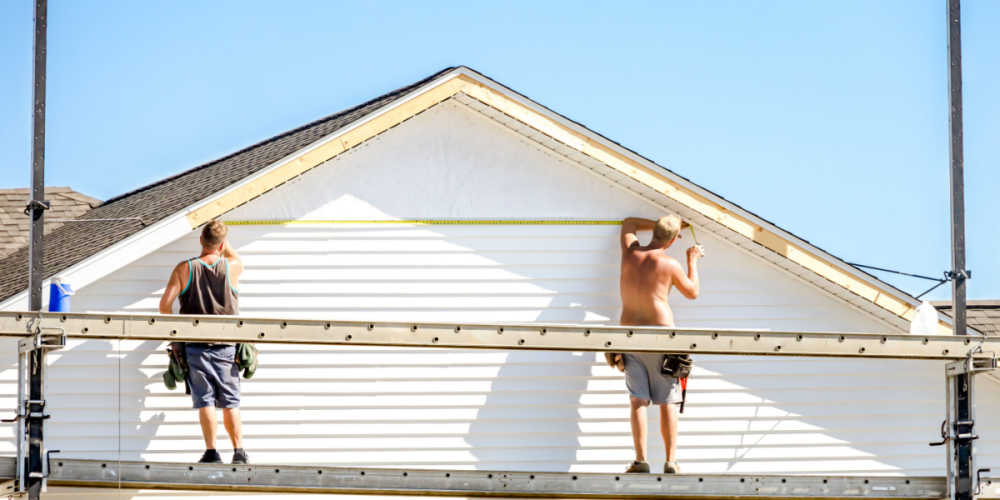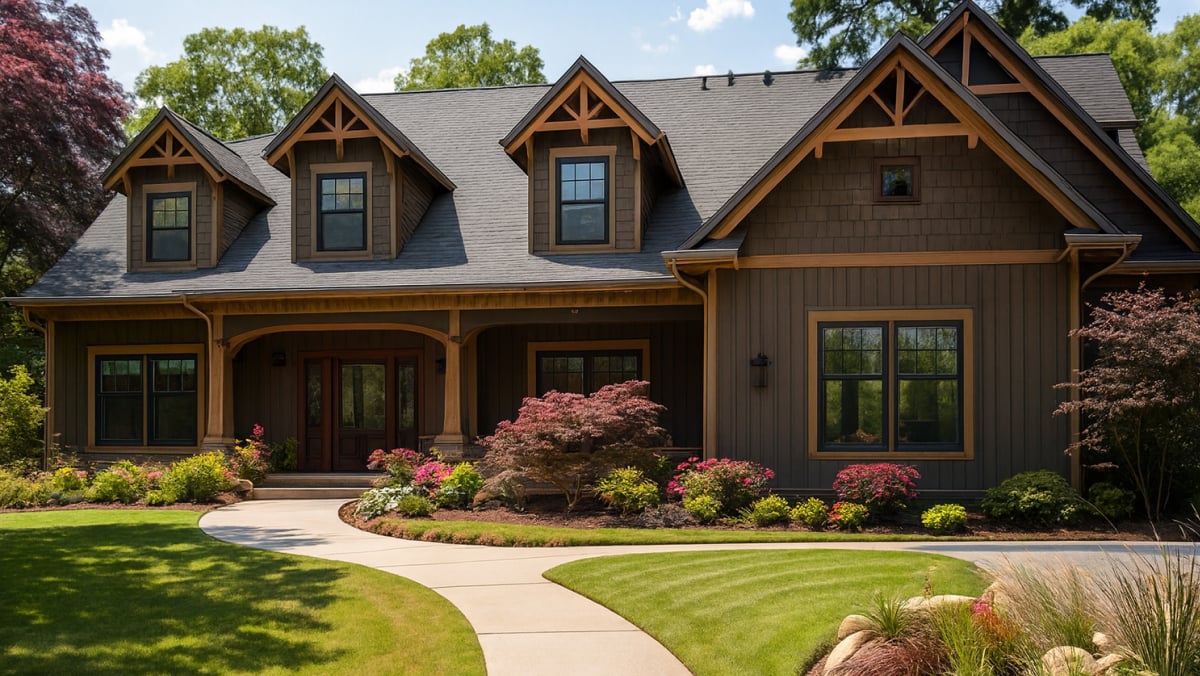When installing new siding on a home, it’s important to know how much you need. To figure that out, you must first gather accurate siding measurements to understand the precise amount of materials required and estimate your costs.
Measuring siding can be complicated and even daunting! Not to mention the potential safety issues if you need to climb to higher areas of the home exterior. You can measure the height and width of the home’s exterior walls the traditional way OR you can use technology like Hover to do the work for you and skip the measuring tape - saving you hours, reducing errors, and eliminating the need to climb a ladder.
However, if you'd like to stick to the old-school method, here's a useful guide to help you gather the right tools, navigate the complexity of the building, and common mistakes to avoid.
The Importance of Accurately Measuring Siding
Accurate siding measurements help homeowners and contractors better estimate the amount of materials needed for the project. With accurate measurements, the job won’t have to stop to buy more materials and there won’t be a large surplus at the end resulting in waste. Accuracy also saves you a significant amount of time and money on the project.
Tools Required for Measuring Siding
Thankfully, you don’t need too many tools. Here’s what we recommend for traditional measuring:
- A tape measure
- A pen and paper
- A calculator
- A step ladder
Better yet, you can download the Hover mobile app, take a few pictures of the property and voila, you'll get a detailed measurements report for both siding and the roof! All of the calculations are done for you and you'll even receive an interactive 3D model of the property to see what the new siding will look like with real-life options to choose from in the app. We're partnered with James Hardie and the nation's other top suppliers and manufacturers.
Step-by-Step Guide on How to Measure Siding
1. Measure rectangular and/or square walls
You’ll want to start with your rectangular walls. Measure their height and width and then multiply those numbers together to get the wall’s area. Don’t deduct windows and doors because including them helps give you a cushion in case of mistakes. However, if it’s a garage door or an extremely large window, you can make some deductions.
2. Find the area of your gables
Multiply the length (base) and height (base to peak) of the triangle then divide that sum by two.
3. Account for waste
Even though you’re not subtracting windows and doors from your area, you’ll still want to add another 10% to your total. This will ensure your project won’t come up short.
4. Measure the entire base of your home
To determine how much starter strip you need, you must measure the home’s perimeter.
5. Count the number of inward and outward corners
Corner posts cover seams at the corners of your home. Count how many inward and outward corners your home has. Be sure to keep these numbers separate because you’ll need different posts for the different corner types. Plan on ordering one post per corner unless your corners are taller than the posts because then you’ll have to order more.
6. Calculate how much J-channel is needed
Measure around your windows and doors, and then measure the total length of your soffit area. Add these totals together to find how much length of J-channel you need. If you have a hip roof, you’ll likely need more to account for the soffit siding change in direction. To learn more about how to install siding and soffit and fascia siding, check out our comprehensive article that covers installing vinyl siding in more detail.
Sounds like too much effort? You can use Hover to get accurate, reliable, and comprehensive measurements by taking a few photos in the mobile app.
Make Measurements Easier with Hover
Forget the tape measure, pencil, ladder, and calculator, and pull out your smartphone.
Using the Hover app and a few photos, our solution builds an interactive 3D model with accurate exterior measurements. Plus, you can actually use those measurements to draw up an estimate for your project.
Common Mistakes to Avoid When Measuring Siding
Although the process seems pretty straightforward, there are some common mistakes you can make—especially if this is your first time re-siding a house.
The first is ordering too little siding. Ordering just enough might seem like the preferred budgetary option. However, if you run out, no one wants to sit around waiting for more materials to arrive. That’s why we recommend not deducting doors and windows from your area calculation and adding an additional 10%.
A second pitfall is inaccurate measurements. The saying “measure twice, cut once” exists for a reason! When in doubt measure your house again to ensure you have the exact figures. Or avoid this issue entirely by using Hover’s software for accurate measurements every time.
The third common mistake is less about measuring and more in line with the project’s total cost. When wrapping up your final calculations don’t forget to add the necessary, miscellaneous items for a siding job—caulk, nails, trim, etc.
How Much Siding Do You Actually Need?
Siding is ordered in “squares” and one square is equal to 100 square feet. You need to divide your height by width total by 100 to determine how many squares make up your home’s exterior.
Let’s look at an example. Imagine a standard home with four sides and two gables. First, we calculate the rectangular walls:
8’ x 10’ = 80’ / 100 = .08 squares 8’ x 10’ = 80’ / 100 = .08 squares 8’ x 12’ = 96’ / 100 = .96 squares 8’ x 12’ = 96’ / 100 = .96 squares — TOTAL = 3.52 squares of siding for the walls.
Next, we’ll calculate the gables: 6’ x 8’ = 24’ / 2 = 12’ / 100 = .012 squares 6’ x 8’ = 24’ / 2 = 12’ / 100 = .012 squares — TOTAL = .024 squares of siding for the gables.
Finally, we add up these two numbers with an extra 10% to account for mistakes:
3.52 + .024 = 3.544 + 10% = 4 squares (we rounded up from the actual total of 3.8984)
So in this example, this fictional homeowner needs four squares worth of siding to complete their project. You’d follow similar calculations to find out how much siding you actually need.
Measuring Siding with HOVER
When you use Hover to measure and calculate how much siding is required, there’s no need for back-of-the-napkin calculations.
Chat with a rep today to see how much easier your next siding project can be.



